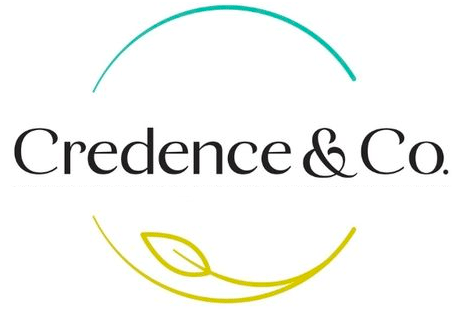A few weeks ago, I spoke with a client who works as a high school principal. He was ready to quit. “The kids,” he said, “are not ok.” After reflecting a while, he continued: “Neither are the parents; nor are the teachers. And neither am I.” The principal offered that while individually, some children have come through the pandemic relatively well, collectively the system is breaking. After two years of isolation and internet-fueled connection, learning, and entertainment, children are struggling, quick to anger, and quick to engage in harmful attention-seeking activities. While the children struggle, those who are meant to support them – parents and teachers – are experiencing their own exhaustion. Their bandwidth for taking on tough behaviour has shrunk. My client offered that when he wondered aloud to his superintendent about what his school is doing wrong, the superintendent replied that the problems my client is facing are true across the board: The kids are not ok.
The conversation with my client was sobering. As our conversation continued, my client and I explored mindfulness strategies he could use to get him through to the summer break. He emailed one week later to let me know that he was feeling much more settled. While I am happy that my client will make it to the summer break, given that the problems he was describing are as much collective as they are individual, solving our collective malaise at the individual level does not feel like enough: What do we do with our collective unease? Will the summer be enough to refuel our tanks?
A week later, a friend called me and posed the very same question: “How do I refill my tank?” she asked. She noticed that the speed with which she goes from calm to distress has become faster. “Smaller things set me off,” she said, adding, “My tank is empty, and I no longer have the resilience I once did.” We discussed strategies she could pursue personally to find her resilience again, but larger questions loomed: How do we rebuild our resilience, when we are no longer collectively resilient?

Ministers too have called expressing a similar distress to the principal and to my friend. For many ministers, keeping church alive through the pandemic while also managing the polarization among congregants related to masks and vaccines has been exhausting. Now, this stress has been compounded by the worry associated with pews that are emptier now than they were before the pandemic. A question I hear again and again is this: “Will they come back?” If the answer to this question is “no,” new and hard questions emerge – none of which have easy answers, including, “How do I keep going when I have so little left to give?”
Our challenges, of course, are not only brought on by the pandemic: Climate crisis, polarization, wars near and far, rising food and energy costs, increased mental health distress, racism and other isms, our own individual crises… The list is long. If you are not feeling some measure of stress, you may not be alive.
Much has been said over the last number of years about the power of contemplation and the ways in which strategies of being present to ourselves, to one another, and to God’s presence can help us to be more faithful, to fall into fewer conflicts and yes, to be more resilient. All of this true and both prayer and meditation do make a difference. I worry though. Does a focus on contemplation and prayer mean that we can all be at peace while the world burns? Or, does a focus on meditation mean that our collective problems are really only individual problems. In other words, is your malaise an indicator that you haven’t meditated enough?
Of course, these questions point to a misunderstanding of meditation and prayer. True contemplation is meant to point us in the direction of self-compassion, not self-absorption. It is meant to help us care for the world not escape it. We desperately need mindful, self-compassionate people whose care for the world helps us to find our footing in such confusing times. We also need these same people to help us make sense of our collective malaise and not only our individual distress.
I am reminded of the book, “In the Shelter of Each Other” by therapist Mary Pipher. In the book, she offers that when a teenager or family comes to her with a mental health concern, she regards their illness as a symptom of a larger social ill. In other words, we can’t only change the world one person at a time. We must also pay attention to the larger social dynamics that are contributing to the malaise, fear, and distress so many are feeling. What practices can we employ to bring healing to our collective malaise?
None of us heals alone. In fact, as social beings, we are not really meant to heal alone. Not only must we support one another’s healing, we must also consider how we heal collectively and not only individually. This raises tough questions: How do we do this? How do we support one another’s healing, and how do we work at collective healing, when collectively we are not well?
These are big questions that knock at the door of every one of our congregations. What is being asked of us? How are we being asked to support one another’s healing and to work at collective healing? Recently, I wondered with a friend what congregations can do to support the health and resilience of their clergy. I wonder though: Can our pastoral leaders support the health of congregants when our leaders themselves are exhausted? There are no easy answers. And – if the problems we are facing are big (such as climate crisis, war or rising food costs), then solving them needs big picture solutions. Of course, this is part of what makes the current moment so difficult: We can feel powerless in the face of the big challenges creating our collective malaise.
I would like to offer the following: While there are no guarantees, we do know that care tends to beget care. Tank-filling begets tank-filling. And small acts of hope together can create a groundswell of hope.
What does all of this mean practically?
- There are many among us who struggle with reaching out to say: “I need help. I can’t do this anymore.” This is especially true among leaders who know that others are looking to them for support. Giving voice to our need for care is not weakness. It is tender vulnerability. It creates space for others to step in and give to us what we cannot easily do for ourselves. Leaders: To whom can you go to say that you need care? Who (outside of your partner if you have one) are your go-to people for care?
- Small things matter. A kind word. A card of acknowledgment. A word of thanks. Social healing is more often found in small (and regular) acts of kindness than in great gestures of grandeur. Leaders: How are you doing this for your people? If it is not your natural inclination to do these things, can you make this part of your daily to-do list? Congregants: How are you showing your care for the people leading you?
- Intentional and collective check-in conversations can build a community of care in the congregation. Most congregations have committee meetings though not all meetings are places of deep trust where people can say how they are doing. With nurture and over time, however, committee meetings can become places of care. Leaders: Can you build a check-in into the beginning of each committee meeting?
- We know that as people, we feel much less overwhelmed when we have some influence or agency over the struggles we are experiencing. Leaders: What would it look like to have open-ended and open-hearted brainstorming conversations with your congregations about how to address and engage the challenges the congregation is facing? Congregants: How can you participate in owning the challenges the congregation is facing?
- In times such as these, we need to be paying attention to those who bring insight, clarity, and wisdom into our conversations, who help us to better see the world in which we live (and who might be able to help us find the path forward). Leaders and Congregants: Who are you listening to in your “off” hours? Who are you reading? What podcasts are you listening to? How do these voices help you to be better people in this world?
- When problems are big, our temptation is to polarize and to avoid disagreements. Many congregations have struggled heavily with polarization of these past two years. Leaders and Congregants: How are you remembering to be tender with one another when you disagree? We know that none of us is smart alone. And we won’t solve our collective crises without the wisdom that comes from disagreeing well with one another. Leaders: How are you modeling an openness and invitation to meaningful disagreements in the search for larger truths?
- And finally, coming full circle to where we started: we know that our interior condition matters. A lot. Leaders and Congregants: How are we, each of us, nurturing our interior condition? Prayer, meditation, daily walks in nature, turning off devices, cooking a good meal – these things matter, allowing us to engage the challenges of our time with more grace, more fortitude, and yes, more resilience.
